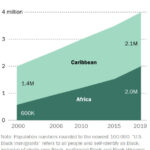Gaslighting, a term now frequently used in discussions about mental health and manipulative behaviors, describes a subtle yet insidious form of emotional abuse. It’s a tactic employed to make someone question their reality, often leaving them feeling confused, anxious, and doubting their sanity. But where does this peculiar term, “gaslighting,” actually originate? The answer lies not in clinical psychology textbooks, but surprisingly, in the world of theater and film.
The term “gaslighting” is rooted in a 1938 British play titled “Gas Light,” later adapted into a film. The narrative centers around a manipulative husband who systematically psychologically abuses his wife, Paula. His primary method involves subtly manipulating the gaslights in their home, dimming them and then denying any change when Paula points it out. This is just one element in a broader campaign designed to make Paula believe she is losing her mind. He orchestrates other bizarre occurrences, such as noises in the attic and the displacement of household objects, all while steadfastly denying these events and attributing Paula’s perceptions to her supposed mental instability.
Paula, already vulnerable due to recent grief and her inherited wealth which attracted her husband’s attention, finds herself increasingly isolated and questioning her own sanity. Her husband’s persistent denial of her reality is so effective that she begins to doubt her perceptions, slowly succumbing to his manipulation and believing herself to be mentally ill. The play, and subsequent films, culminates in a deeply disturbing outcome – the wife being institutionalized, paving the way for the husband to seize her inheritance. The power of “Gas Light” lies in its depiction of the gradual erosion of a person’s sense of reality, a process that is both chilling to witness and profoundly relevant to understanding emotional abuse.
Gaslighting: A Timeless Form of Manipulation
The term “gaslighting,” born from this dramatic depiction, has become a critical concept in understanding modern psychological abuse. It remains a potent and damaging tactic in toxic and abusive relationships because of its effectiveness in undermining a victim’s self-perception and trust in their own judgment. The insidious nature of gaslighting makes it particularly harmful, as victims often begin to doubt themselves before they recognize the manipulation they are experiencing. For further exploration, resources detail the various types of gaslighting, highlighting its diverse manifestations in relationships.
It’s crucial to acknowledge the societal context that can enable gaslighting. Historically, women, in particular, have been disproportionately labeled as “hysterical” or “crazy” when expressing emotions or concerns. This historical bias can make women more susceptible to gaslighting, as their genuine concerns may be dismissed or downplayed, both externally and internally. Cultural and religious norms that devalue or disregard women’s experiences can further exacerbate this vulnerability, making it harder for women to recognize gaslighting early on.
Furthermore, societal discomfort with emotions contributes to an environment where gaslighting can thrive. In a culture that often stigmatizes emotional expression, individuals who express their feelings may be met with disapproval or dismissal. This societal backdrop can make it challenging for individuals, especially those historically encouraged to be emotionally expressive, to trust their own emotional responses and defend themselves against gaslighting tactics in interpersonal dynamics.
Cultural Echoes of Gaslighting: From Reality TV to Everyday Life
Gaslighting Scenarios in Reality Television
The dynamics of gaslighting are not confined to personal relationships; they often play out in broader cultural arenas, even on reality television. A stark example emerged in Season 2 of the Netflix series “Love is Blind.” In one scene, contestant Shayne, while juggling relationships with two women in separate “pods,” mistakenly calls Natalie by the other woman’s name. The gaslighting ensues immediately as Shayne attempts to control Natalie’s reaction, saying things like, “You aren’t going to be upset about this, right?” and “This is ridiculous. Don’t make this a big deal!” Natalie, instead of having her feelings validated, begins to feel ashamed for her entirely reasonable upset and ends up apologizing for his error. This scenario, while seemingly minor, encapsulates classic gaslighting, and its normalization in media can contribute to a lack of awareness about this manipulative tactic in everyday relationships.
Gaslighting within Communities and Even Healthy Relationships
Insular communities, particularly those with high demands and strict structures, can also foster environments ripe for gaslighting. In such settings, encouraging members to doubt their instincts and perceptions becomes a powerful tool for maintaining adherence to community rules and norms. Questioning oneself becomes normalized, enhancing conformity, sometimes at the expense of individual well-being and reality.
Interestingly, gaslighting isn’t exclusive to overtly abusive relationships. It can surface even in relatively healthy relationships, particularly when tensions rise or during conflicts. Couples can inadvertently engage in gaslighting behaviors when they become defensive, hurt, or prioritize self-protection over empathetic communication. Recognizing these patterns in moments of conflict is crucial for fostering healthier communication and preventing unintentional emotional manipulation.
Understanding Gaslighting for Healthier Relationships
Understanding the origins and manifestations of gaslighting, both in its dramatic portrayal and in everyday life, is a powerful step towards building healthier relationships and fostering emotional well-being. Recognizing gaslighting tactics allows individuals to identify, address, and navigate manipulative dynamics more effectively. By understanding where the term “gaslighting comes from” and how the behavior manifests, we are better equipped to protect ourselves and cultivate authentic and respectful connections with others.
For those seeking deeper understanding and support in dealing with gaslighting, seeking guidance from mental health professionals can be invaluable. Therapists specializing in trauma-informed care can provide tools and strategies to recognize gaslighting, heal from its impact, and build resilience in relationships.

